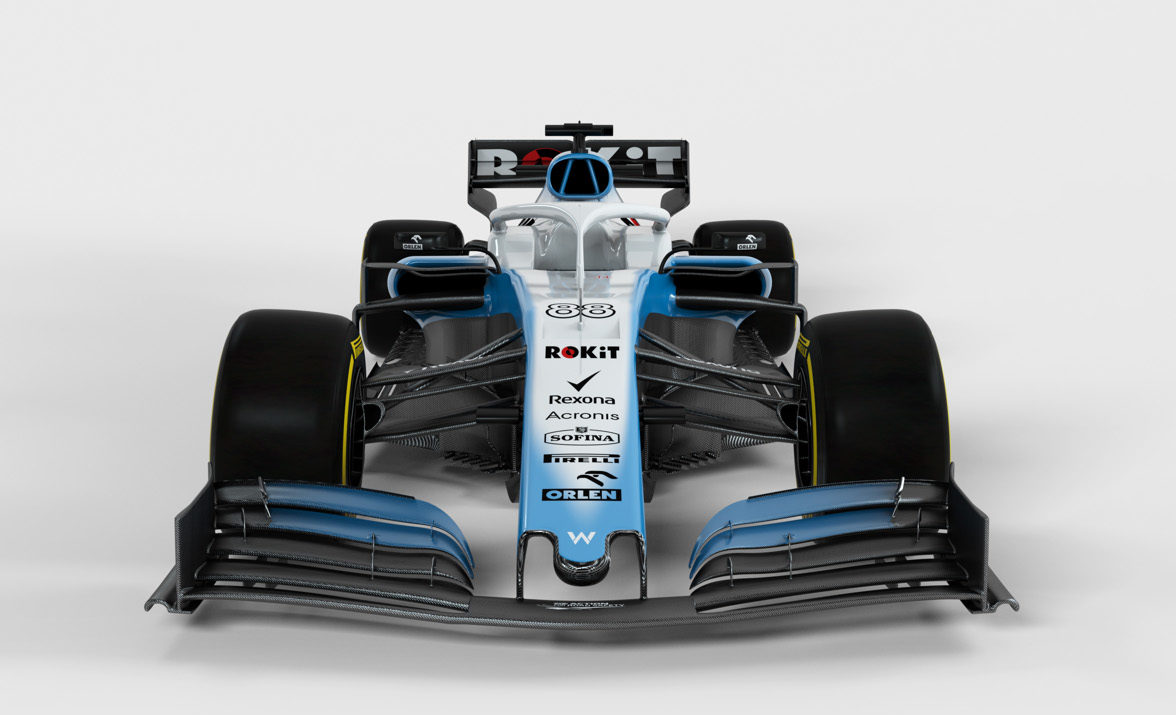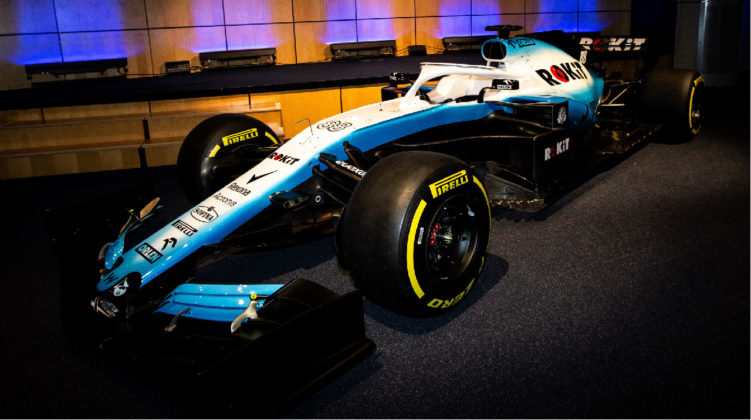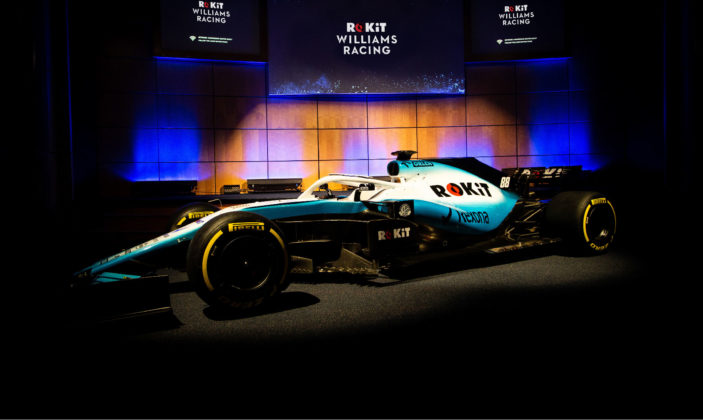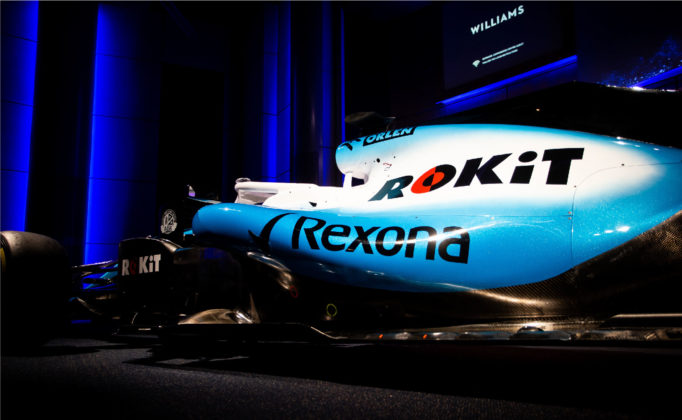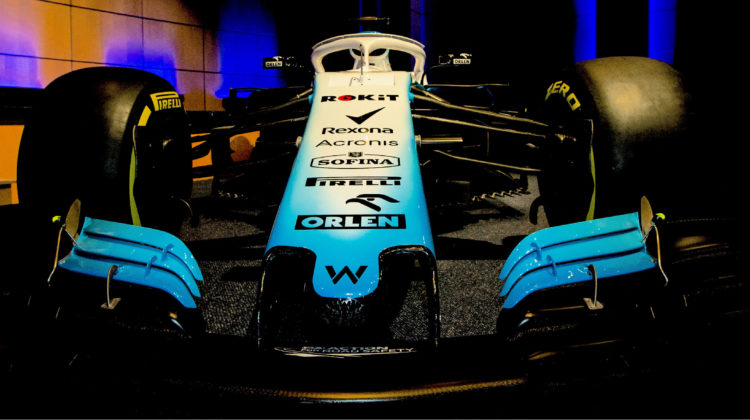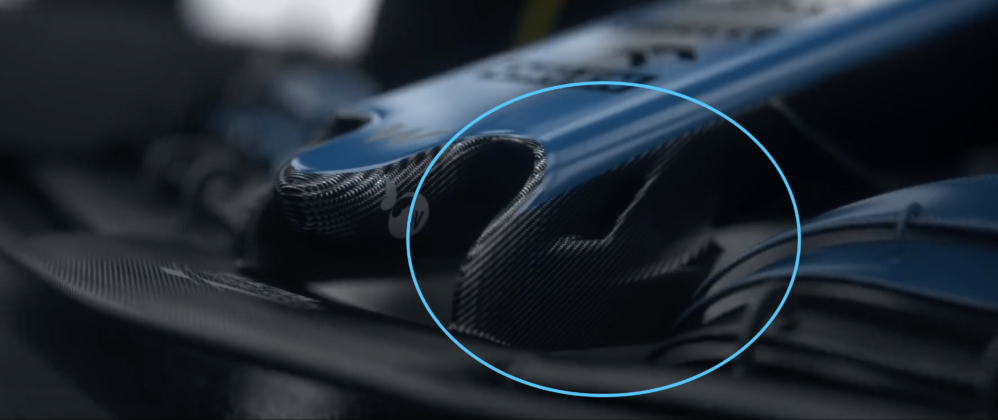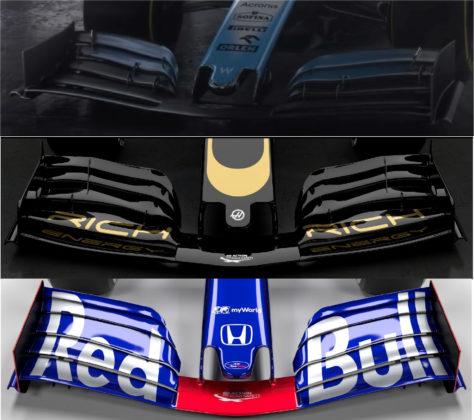Williams FW42
Williams wowed the crowds at their livery launch held at the team’s headquarters in Grove. Not only does the new FW42 feature a vibrant blue livery but a brand new title sponsor as well. Here’s to hoping that this dramatic new look and investment is enough to end the team’s long and painful losing streak.
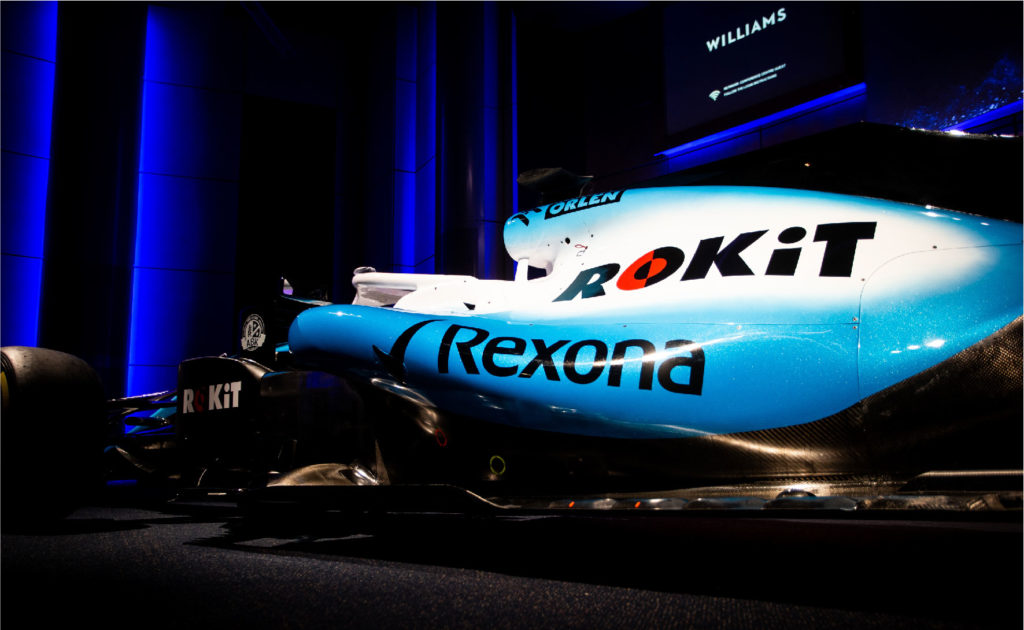
Securing a title partner off the back of the team’s worst season to date is an astounding achievement and one which is rarely accomplished – as proven by the collapse of teams such as Manor Racing and Caterham. So revealing that Williams have not only secured a new sponsor, but a new title sponsor is fantastic news for the Championship. Their partners in crime are ROKiT who are a new telco brand that offers consumers state of the art mobile handsets and wireless connectivity along with various other products.
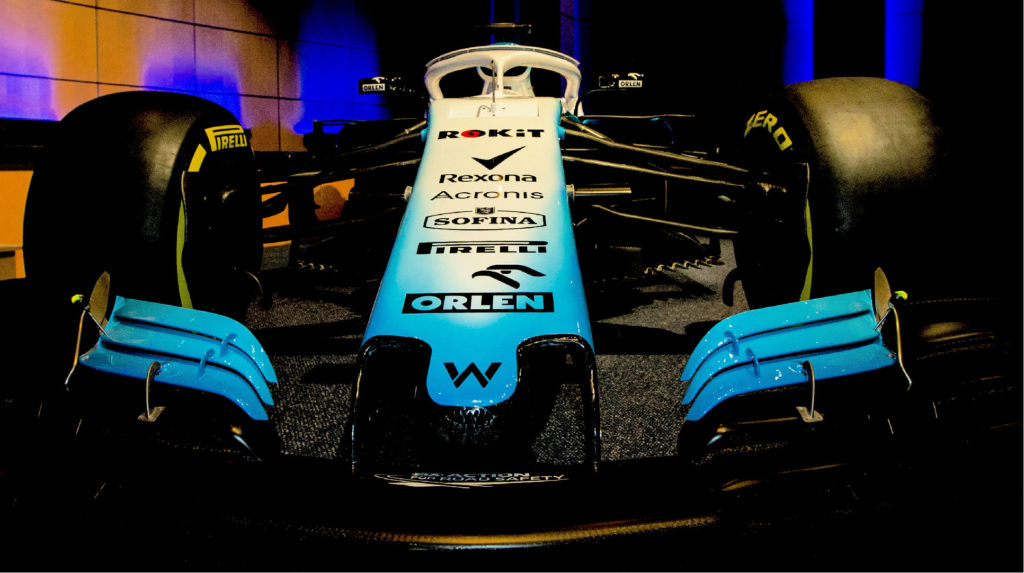
As ever with these livery launches, the use of clever lighting makes it difficult to deduce too much of the 2019 design. As expected, the front wing is simplified with 5 main elements and a simplistic endplate design. The Williams FW42’s front wing resembles Haas’s VF-19, with three narrow elements at the top of the wing, rather than a wider third element as seen on Toro Rosso’s STR14.
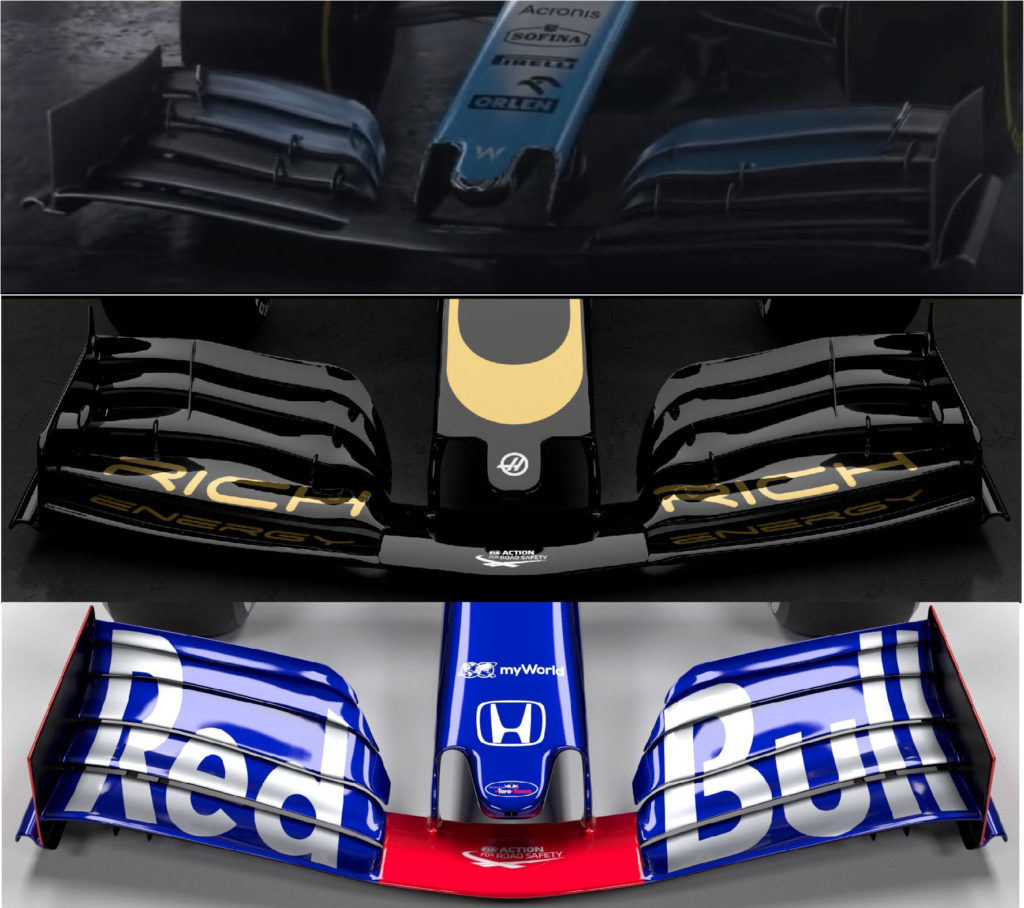
One interesting detail that we can see from the Williams FW42 rendering is a small inlet on the side of the nose, which hasn’t featured on any of the front wings that have been revealed so far.
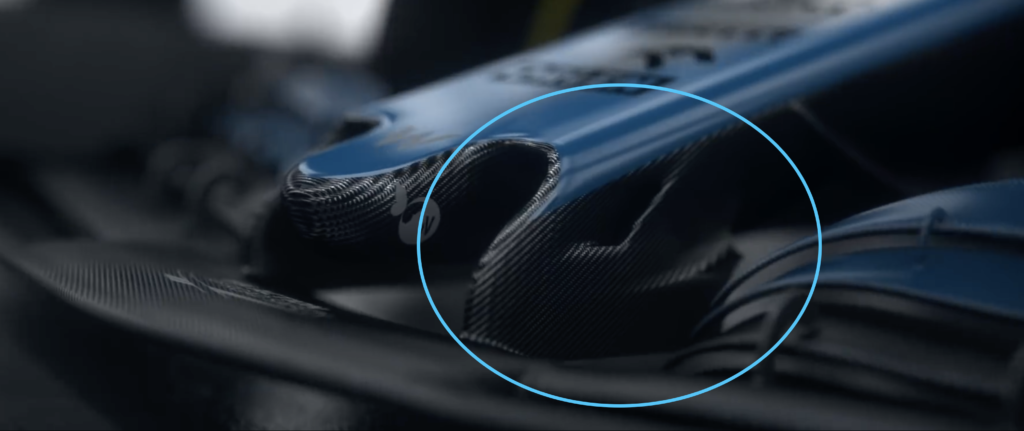
The 2019 regulations aim to improve overtaking by reducing the out-wash effect of the front wing, hence the simplified designs. ‘Some really fascinating work has been done by the FIA and Formula 1 to research the effect of front wheel wake and particularly the impact of front wing end plates on that,’ Williams technical director Paddy Lowe says. ‘A decade ago we had the overtaking working group [OWG] which delivered the 2009 regulations. I was part of that process and I thought that it would deliver a reasonably good outcome. But at the time ‘out-washing’ end plates as they became known had not been invented. However, as a direct result of the 2009 rules they were invented. It is interesting to see now that those out-washing endplates undermined significantly the work of the OWG programme and reduced the benefits it found.’
Lowe believes that had the OWG project continued after 2009, these out-washing issues would have been spotted earlier. ‘The original OWG project was funded by the teams, each who paid about £50,000 for the research, and it would have been interesting to have done it again a year later and we could have understood what the teams had done. Had we done that at the time we might have landed at this correction much more quickly. Now Formula 1 has funded centralised research we are able to get onto these things in a centralised way. I’m optimistic that it will make a reasonable impact on the ability to follow.’
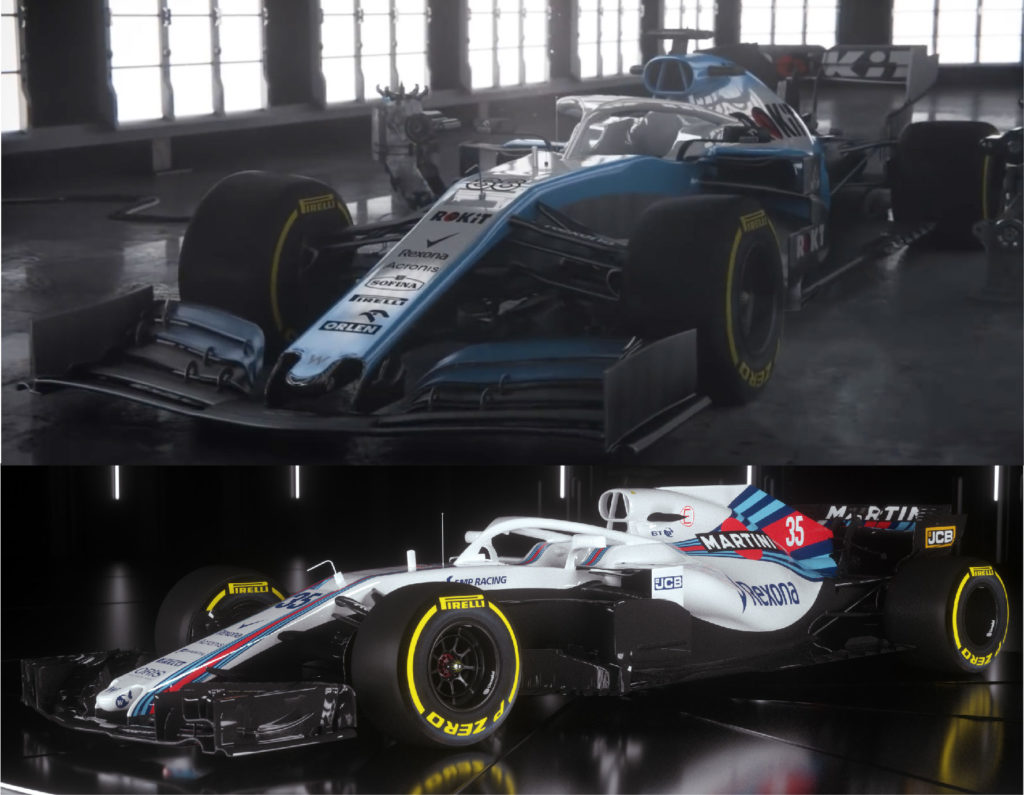
The front wing is just one piece of the 2019 rule change puzzle. Bargeboards, brake ducts, rear wings and sidepods have all required modifications too. ‘We’ve got rid of all the furniture on the front wing, it’s a wider span, the brake duct winglets have gone, the bargeboard area is very different and what that all does is it gives you much worse wheel wake control,’ explained outgoing head of vehicle performance at Williams, Rob Smedley, last year. ‘We’ve found some really clear directions of where we need to work to recover the performance and it will be very, very interesting at the start of the season, to see the different concepts that come out. Then you’ll probably find that there’ll be a really quick convergence as usual as we take the best concepts from all the cars and blend that into the normal lookalike Formula 1 car.’

With the 2019 season officially kicking off, Lowe is hoping to lead Williams into a new era of racing. ‘Our aims and ambitions remain the same as they were, to make a big step and get to the head of the grid,’ Lowe says. ‘I hope that the dedication the team has shown this year along with better processes and a better technical approach applied to the new car design will let us achieve that. I have a lot of hope and indeed confidence that we can do that. The last time we really had such a significant change to the regulations was 2009, and then you saw considerable disruption to the pack. The new aerodynamic regulations provide a good opportunity, the field will kind of be reset in some areas of the car, and that will let us exploit some things.’
Only when the car hits the track at pre-season testing will we get a true representation of the 2019 car design and what this new FW42 is capable of.

